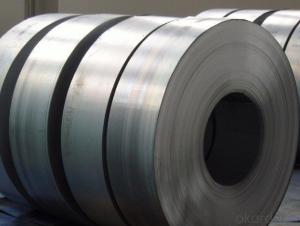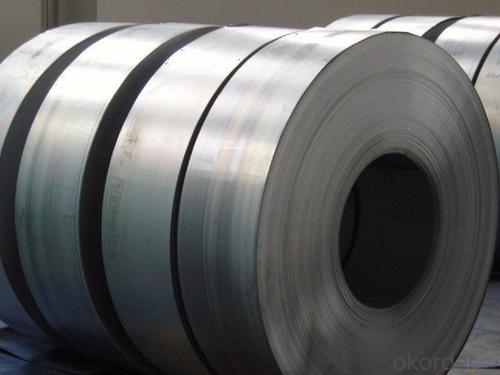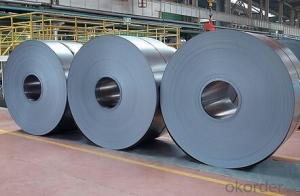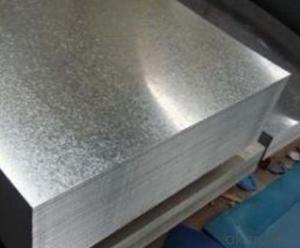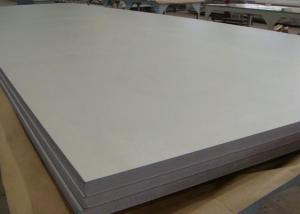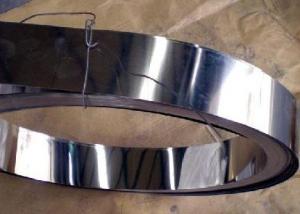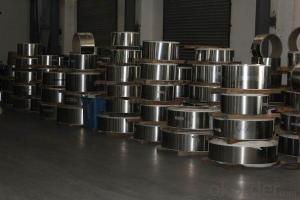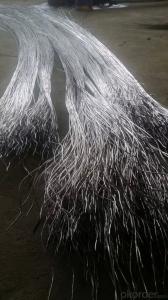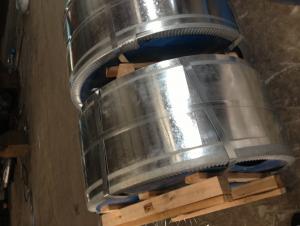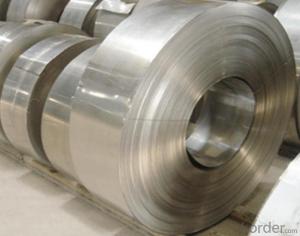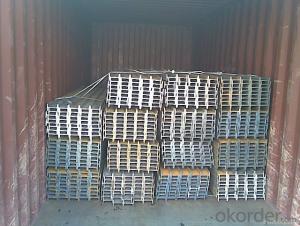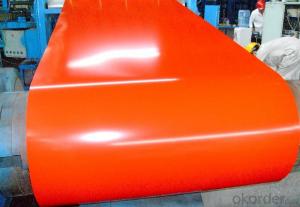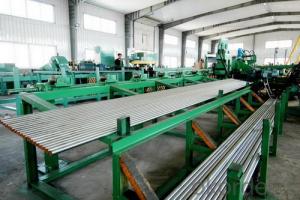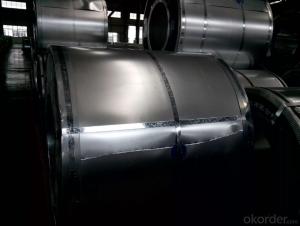Strip Steel Thin Size
- Loading Port:
- China Main Port
- Payment Terms:
- TT OR LC
- Min Order Qty:
- -
- Supply Capability:
- -
OKorder Service Pledge
OKorder Financial Service
You Might Also Like
Corresponding Steel Grade for Reference:
CHN, GB | JPN, JIS | GER, DIN |
50CrVA | SUP10 | 50CrV4 |
GBR, BS | FRA,FN | |
735A51 | 50CV4 |
Chemical Composition:
C | Si | Mn |
0.46~0.54 | 0.17~0.37 | 0.50~0.80 |
S | P | Cr |
≤0.030 | ≤0.030 | 0.80~1.10 |
Ni | Cu | V |
≤0.35 | ≤0.25 | 0.10~0.20 |
Mechanical Properties:
-Tensile Strength σb (MPa): ≥1274 (130)
-Yield Strength σs (MPa): ≥1127 (115)
-Elongation δ5 (%):≥10
-Percentage reduction of area: ψ (%): ≥40
-Hardness:
1, Hot rolled, ≤321HB
2, Cold drawn + Heat treatment: ≤321HB
-Norm of heat treatment:
1, Quenching: 850℃±20℃.
2, Cooled by oil.
3, Tempering: 500℃±50℃.
Usage/Applications
Mechanical Properties are good. 50CrVA have high hardenability. The element V reduces thermal sensitivity and improves the strength and toughness. The fatigue strength and yield point are high but the weld ability is bad.
-50CrVA is a nice material of spring. Usually it’s used as valve spring, piston spring and secure valve spring with big section that can bear much load. The working temperature is below 300℃
Packaging & Delivery
-Packing Detail: The products will be well packed.
-Delivery Detail: 30~45 working days after receive buyer’s T.T. or L/C.
- Q: What are the different mechanical tests performed on steel strips?
- There are several mechanical tests performed on steel strips to assess their physical and mechanical properties. Some of the common tests include: 1. Tensile Test: This test measures the tensile strength, yield strength, and elongation of the steel strip. It involves applying a gradually increasing axial load to the strip until it fractures. 2. Hardness Test: The hardness of a steel strip can be determined using various methods like Rockwell, Vickers, or Brinell hardness tests. This test measures the resistance of the material to indentation or scratching. 3. Bend Test: This test evaluates the ductility and flexibility of the steel strip. It involves bending the strip to a specific angle without any signs of cracking or breaking. 4. Impact Test: This test assesses the toughness and impact resistance of the steel strip by subjecting it to a sudden load or impact. It measures the energy absorbed by the material during fracture. 5. Fatigue Test: This test determines the strength and durability of the steel strip under repeated or cyclic loading conditions. It assesses the material's resistance to failure caused by repetitive stress or strain. 6. Flattening Test: This test evaluates the ability of the steel strip to withstand flattening or deformation under compressive forces. It measures the deformation or cracking of the strip when subjected to a specific load. 7. Shear Test: This test determines the shear strength of the steel strip by applying a force parallel to its surface. It measures the maximum force required to shear the material. These mechanical tests help in characterizing the quality, performance, and suitability of steel strips for various applications such as automotive, construction, or manufacturing industries. They provide valuable information about the material's strength, ductility, hardness, and ability to withstand different loads and forces.
- Q: How are steel strips slit into narrower widths?
- Steel strips are slit into narrower widths using a machine called a slitter. The slitter cuts the steel strip longitudinally, creating multiple narrower strips with precise dimensions.
- Q: Are steel strips used in the production of solar panels?
- Typically, steel strips find their usage in diverse sectors like construction, manufacturing, and automotive industries. However, when it comes to the production of solar panels, they do not play a significant role. The primary element utilized in solar panels is silicon, a semiconductor material. This silicon undergoes processing to form delicate wafers, which are subsequently assembled into solar cells. These solar cells are then employed to fabricate solar panels.
- Q: How are steel strips used in the production of metal nameplates?
- Steel strips are used in the production of metal nameplates in several ways. Firstly, steel strips provide a sturdy and durable base material for the nameplate, ensuring its longevity and resistance to wear and tear. The steel strips are usually cut into the desired shape and size, forming the foundation of the nameplate. Additionally, steel strips are often used for the embossing or debossing process in nameplate production. This involves creating raised or recessed designs, logos, or text on the surface of the nameplate. The steel strips are carefully engraved or stamped with the desired design, and then pressed into the final nameplate material, leaving a permanent impression. Moreover, steel strips can be used as a substrate for applying various coatings or finishes to the nameplate. These coatings can include protective layers to enhance the nameplate's resistance to corrosion, as well as decorative finishes like paint, powder coating, or plating. The steel strips provide a smooth and even surface for these coatings to adhere to, resulting in a high-quality and visually appealing end product. Overall, steel strips play a crucial role in the production of metal nameplates by providing a sturdy base material, facilitating embossing or debossing processes, and allowing for the application of coatings or finishes. Their use ensures the durability, aesthetic appeal, and functionality of metal nameplates in various applications such as branding, labeling, identification, and signage.
- Q: How do steel strips contribute to the strength of structures?
- Steel strips contribute to the strength of structures in several ways. Firstly, steel is an incredibly strong and durable material, known for its high tensile strength. When steel strips are incorporated into a structure, they provide reinforcement and support, helping to bear heavy loads and resist external forces such as wind or earthquakes. This reinforcement helps to prevent deformation or collapse of the structure, ensuring its stability and longevity. Additionally, steel strips can be strategically placed in key areas of a structure to distribute and transfer loads more efficiently. By acting as load-bearing components, they can effectively transfer the weight and stress from one area to another, preventing localized points of weakness or failure. This distribution of load helps to evenly distribute the forces acting on the structure, enhancing its overall strength and stability. Moreover, steel strips are often used as tension members in structures, such as beams or columns. Due to their high tensile strength, they are able to resist pulling forces and prevent the structure from being pulled apart. This is particularly crucial in structures that might experience high tension forces, such as bridges or tall buildings, where the steel strips help to counteract the effects of gravity and keep the structure intact. Furthermore, steel strips are resistant to corrosion and degradation, making them highly suitable for long-term structural applications. This durability allows structures to maintain their strength and integrity over time, reducing the need for frequent repairs or replacements. The inclusion of steel strips in the construction process ensures that the structure remains robust and resilient for years to come. In conclusion, steel strips greatly contribute to the strength of structures by providing reinforcement, load distribution, tension resistance, and durability. Their integration helps to ensure the stability, safety, and longevity of various types of structures, from buildings and bridges to infrastructure and industrial facilities.
- Q: Can steel strips be used in the production of automotive exhaust systems?
- Yes, steel strips can be used in the production of automotive exhaust systems. Steel strips are commonly used to manufacture exhaust components such as pipes, mufflers, and resonators due to their strength, durability, and heat resistance properties.
- Q: How are steel strips different from steel coils?
- Steel strips and steel coils differ in terms of their shape and size. Steel strips are narrow, flat pieces of steel that are typically less than 600mm in width, while steel coils are large rolls of steel that can be several meters wide. Additionally, steel strips are usually produced by cutting larger coils into narrower strips, whereas steel coils are directly produced in the desired size.
- Q: What is the difference between hot rolling and cold rolling of steel strips?
- The temperature at which steel strips are processed and the resulting effects on the material are the main factors distinguishing hot rolling from cold rolling. Hot rolling entails subjecting the steel strips to exceedingly high temperatures, typically surpassing the metal's recrystallization temperature. This action renders the steel more pliable by softening it, facilitating easy shaping and molding into various products. The heated steel is then passed through a sequence of rollers to decrease its thickness and achieve the desired dimensions. Hot rolling yields a smoother surface finish and less residual stress in the steel, rendering it suitable for applications necessitating increased strength or ductility. In contrast, cold rolling is conducted at or slightly below room temperature, without heating the steel strips. This process involves guiding the steel through a series of rollers that gradually reduce its thickness. Cold rolling not only refines the steel's grain structure but also elevates its hardness and strength. Moreover, cold rolling enhances the steel's surface finish, making it suitable for applications desiring a sleek and polished appearance. To summarize, hot rolling is conducted at elevated temperatures to enhance formability and shape the steel, whereas cold rolling is performed at room temperature to augment the mechanical properties and surface finish of the steel. The choice between hot rolling and cold rolling depends on the specific requirements of the end product and the desired characteristics of the steel.
- Q: How are steel strips annealed?
- Annealing is a heat treatment process used to anneal steel strips, which involves heating them to a specific temperature and then slowly cooling them. This process relieves internal stresses, enhances ductility, and improves the overall properties of the material. To begin the annealing process, the steel strips are cleaned to remove any dirt or contaminants. Once cleaned, they are placed in a furnace or annealing oven and heated to a predetermined temperature. The duration of heating and the temperature are determined based on factors such as the type of steel, its thickness, and the desired properties. During the heating phase, the steel strips are held at the specified temperature for a certain period to allow for the redistribution of internal stresses. This step eliminates any dislocations or defects within the crystal lattice structure of the material. After the holding time, the steel strips are slowly cooled down in a controlled manner. This gradual cooling process, also known as furnace cooling or natural cooling, prevents the formation of new stresses or cracks. Sometimes, steel strips undergo additional processes after annealing, such as pickling or cold rolling, to further refine their properties. Pickling removes surface oxides or scale, while cold rolling improves surface finish and dimensional accuracy. Overall, annealing steel strips is a critical step in the manufacturing process. It optimizes mechanical properties, increases workability, and ensures suitability for various applications.
- Q: Can steel strips be used in the aerospace industry?
- Yes, steel strips can be used in the aerospace industry. They are commonly used for various applications such as structural components, fasteners, and support brackets. Steel strips offer high strength, durability, and heat resistance, making them suitable for aerospace manufacturing and maintenance.
Send your message to us
Strip Steel Thin Size
- Loading Port:
- China Main Port
- Payment Terms:
- TT OR LC
- Min Order Qty:
- -
- Supply Capability:
- -
OKorder Service Pledge
OKorder Financial Service
Similar products
Hot products
Hot Searches
Related keywords
